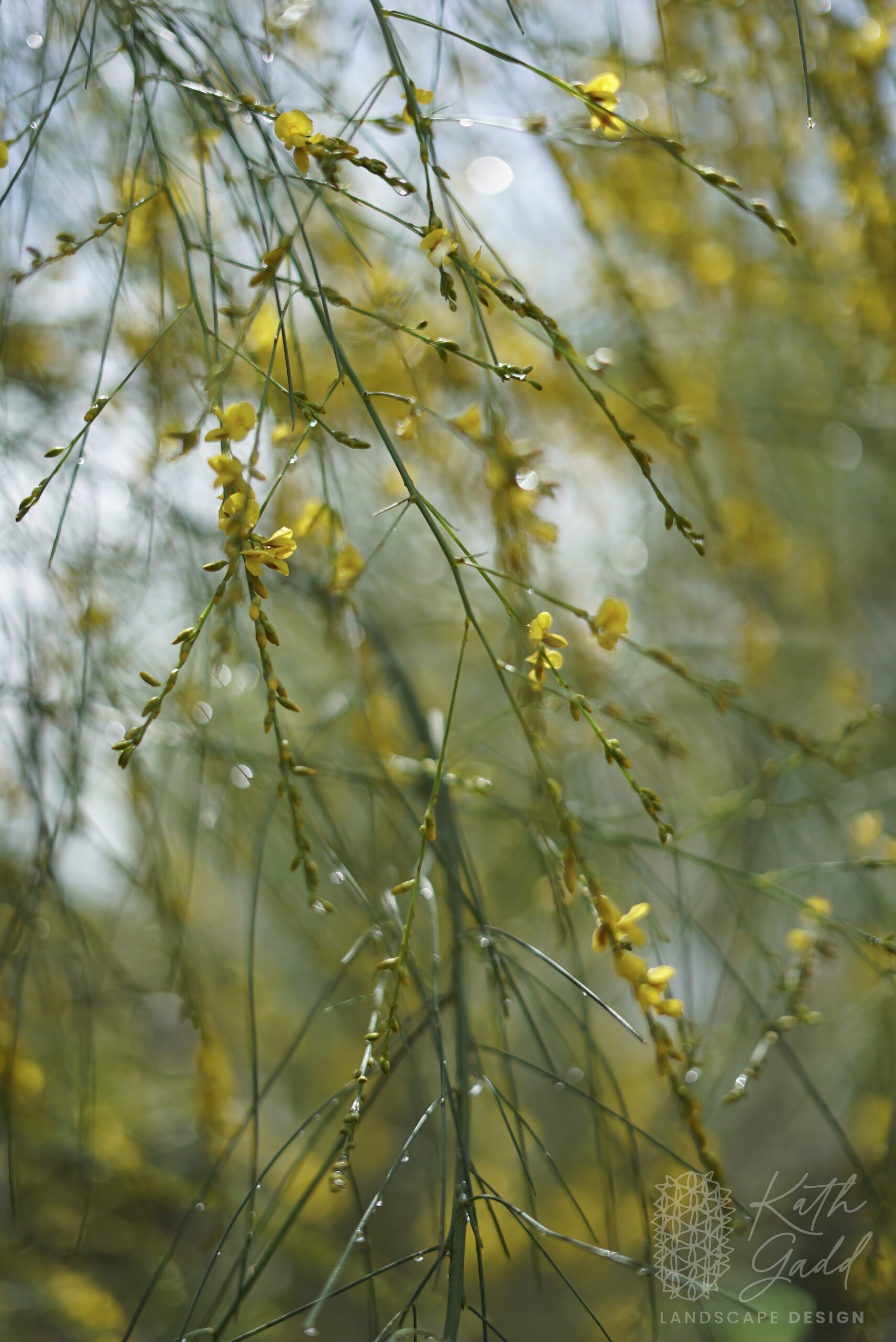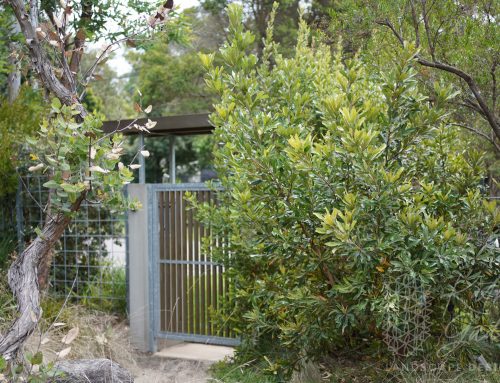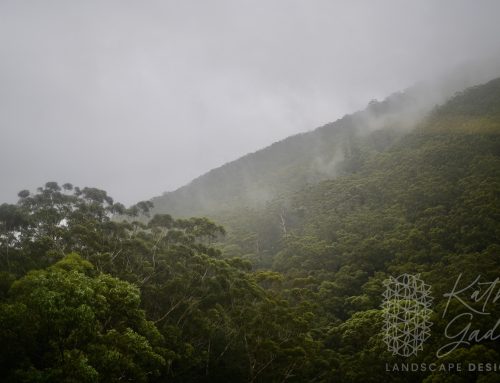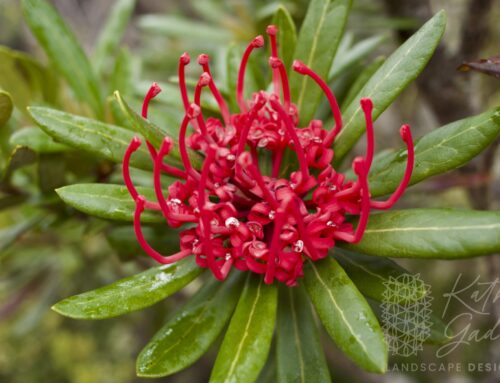This is the Native Broom or Viminaria juncea and I have been waiting a long time for these first flowers to open, even though this specimen is flowering on the early side. The yellow pea flowers located on long, drooping leaf stalks usually occur from October to February, mine has been budding up for a month and I am sure this is just the beginning of its prolific flowering period, however I am impatient and wanted to share this wonderful species with you now.
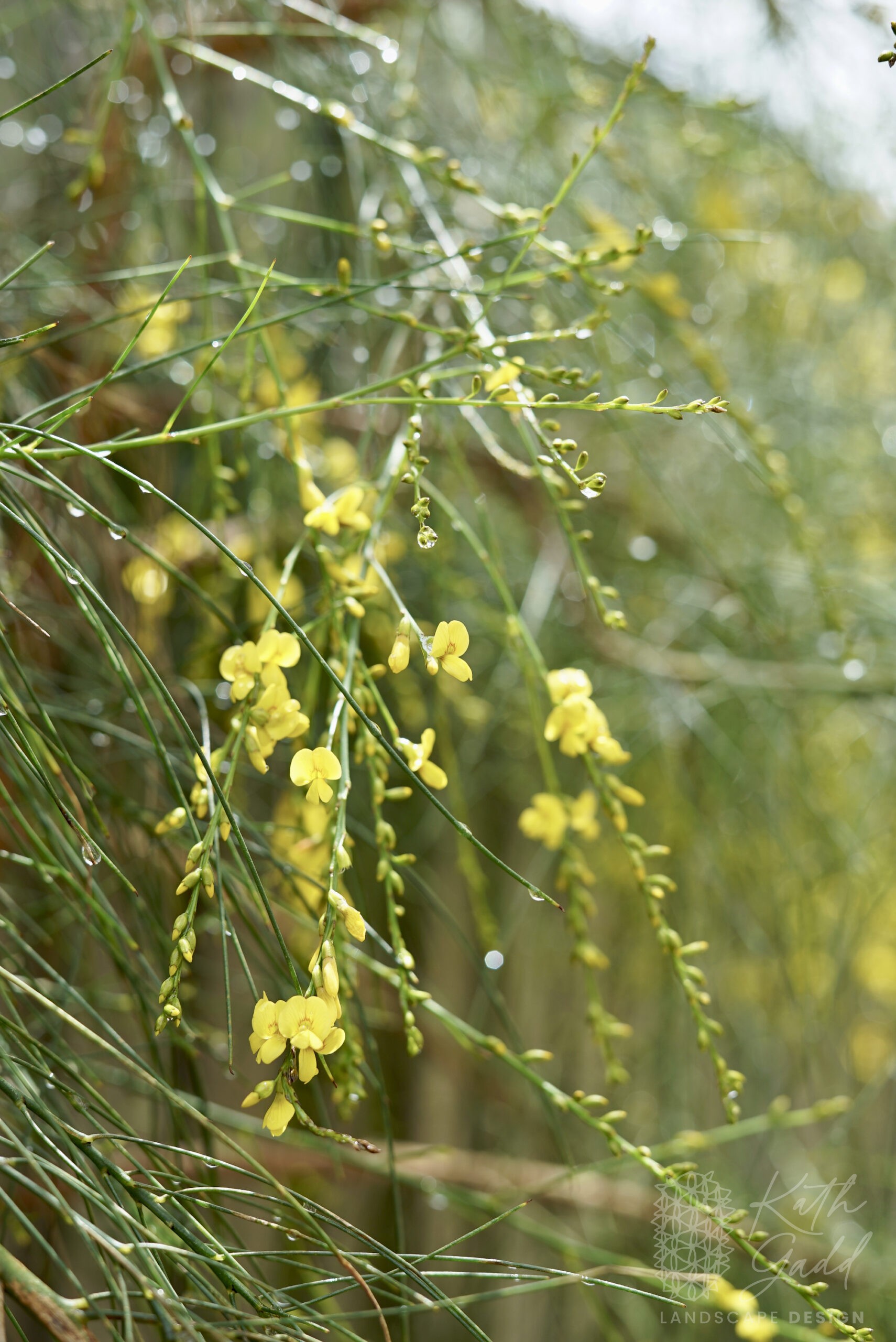
This is an important addition to the native plants which will tolerate our extended LaNina weather here on the east coast of NSW, it has done nothing but rain since I planted this Viminaria 12 months ago, so yes it is an extremely quick growing species.
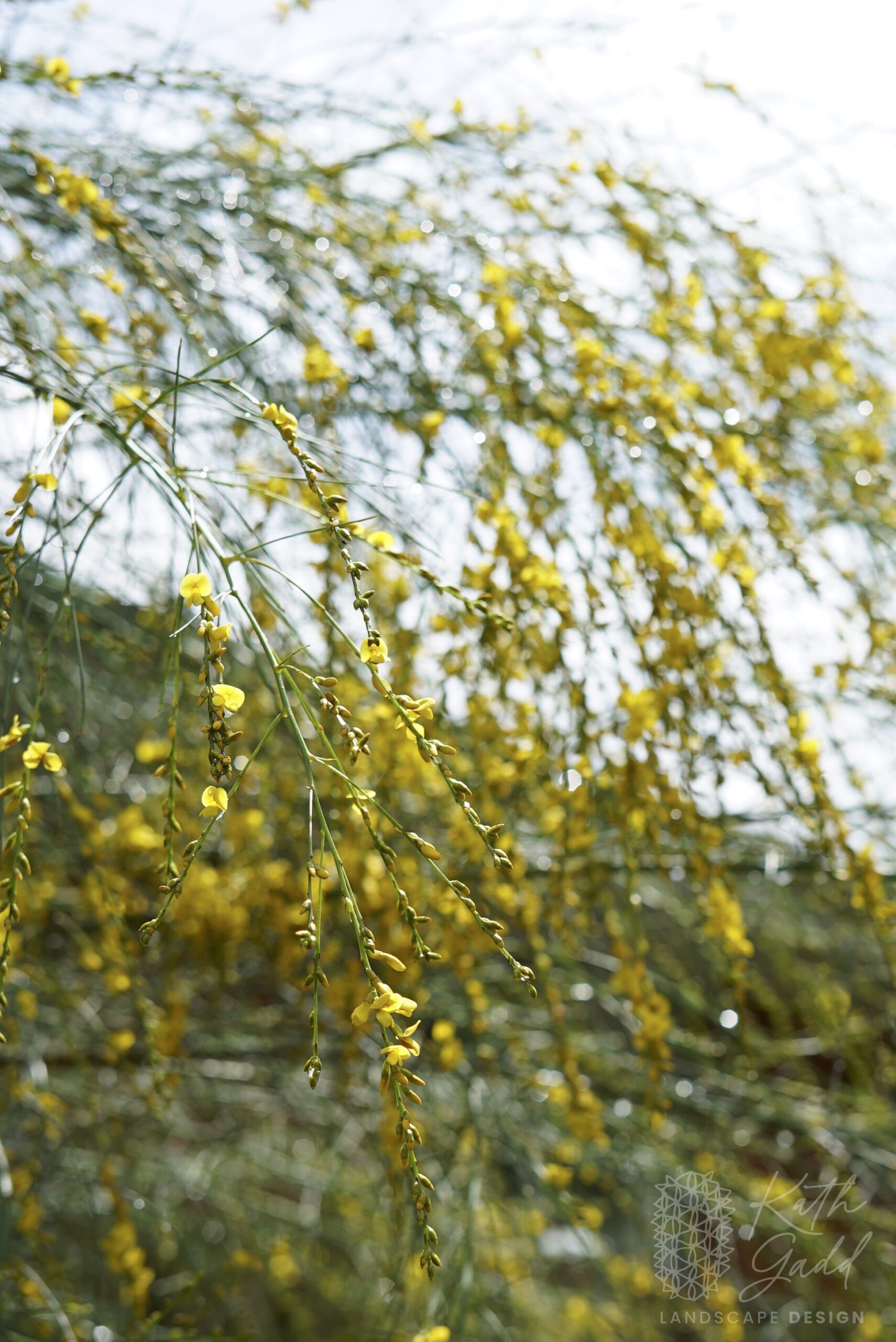
This slender weeping shrub can become a small feature tree or be pruned to 2 or 3 metres high as a screen. If left alone it will develop a low trunk or trunks with a soft weeping, open, crown and can reach somewhere between 5 to 7 metres. Viminaria juncea in its natural environment is found in poorly drained soils but is adaptable to sandy, heavy and clay soils and will tolerate salt and lime.
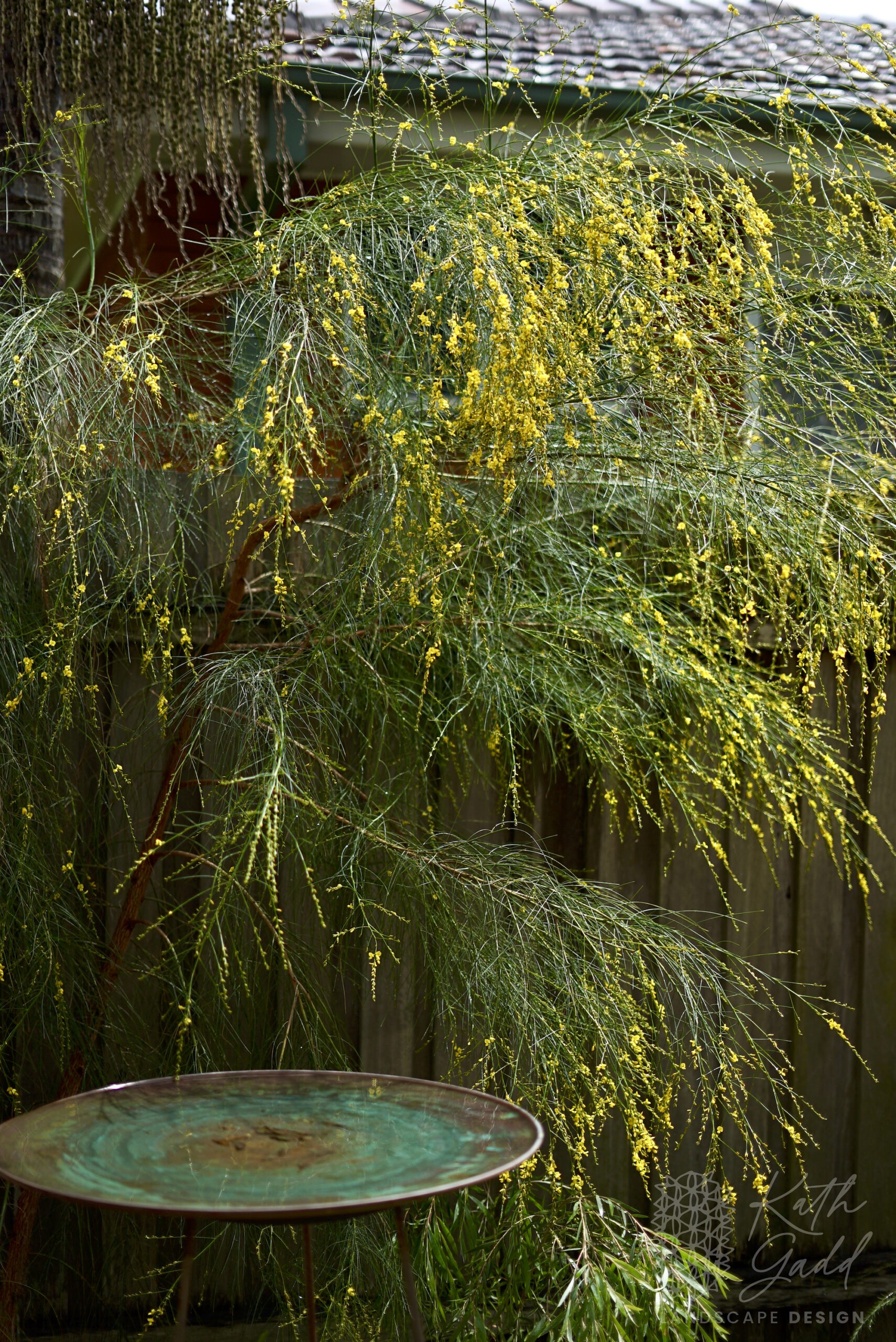
It is a useful species to plant next to swimming pools, where there will be mineral salts in the water, as it can handle splashing and over flow. I largely planted this species for the bees, with its bright yellow pea flowers it is a bee magnetic, but the seed pods should also attract seed eating birds after the flowering period is over.
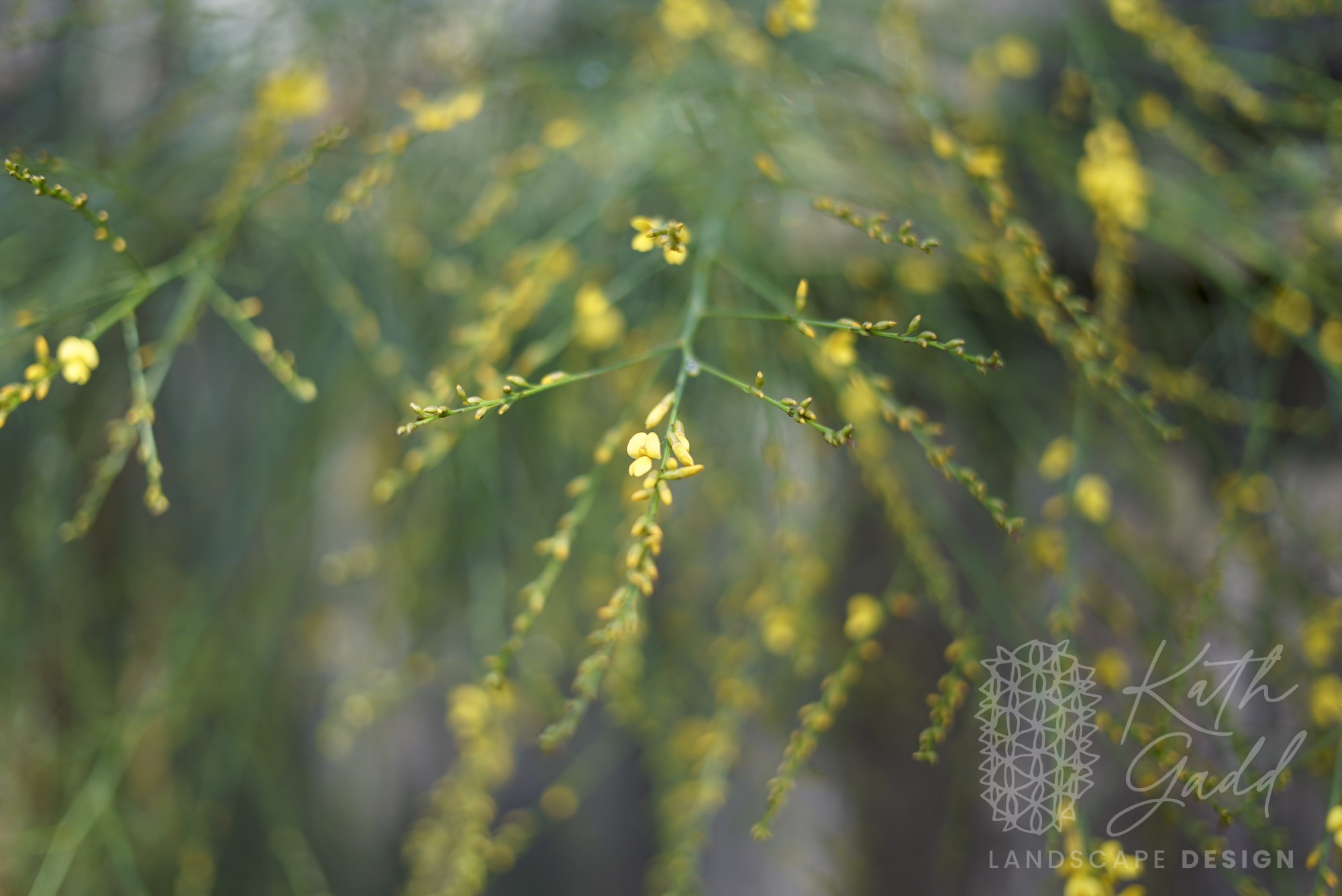
Viminaria juncea also looks great planted in a group as well as a singular specimen. I have used it in my garden as a screening plant with the contrasting upright silver foliage of a grafted Hakea next to it, I will keep it prune don the lower hand and let it spread and hang for the top few metres.
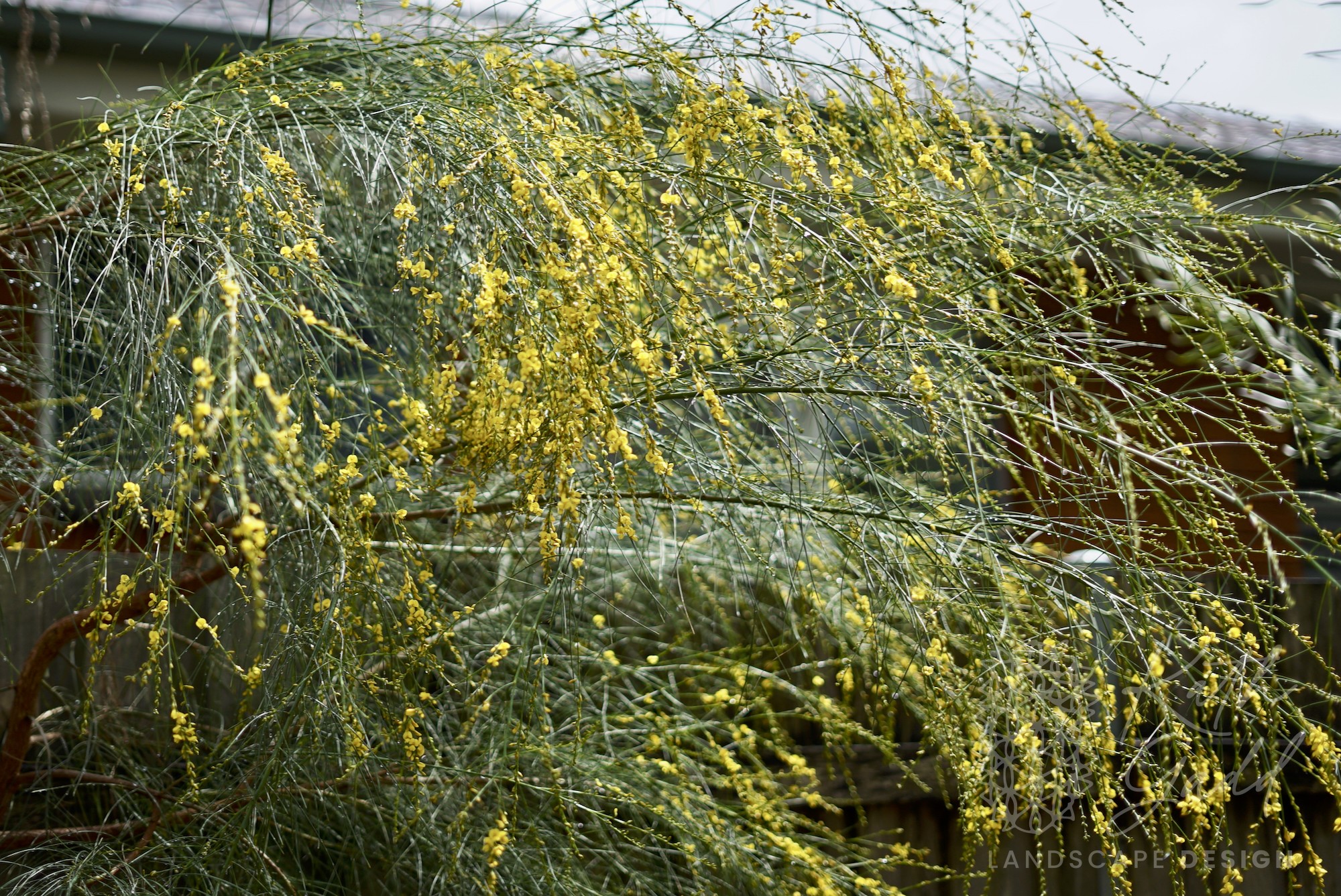
As with many fast growing native species, Viminaria may begin to decline after 6 or 7 years, so make sure you have a backup plan 😉 This species is also moderately frost tolerant as it can be found growing naturally in the Southern states of Australia.
